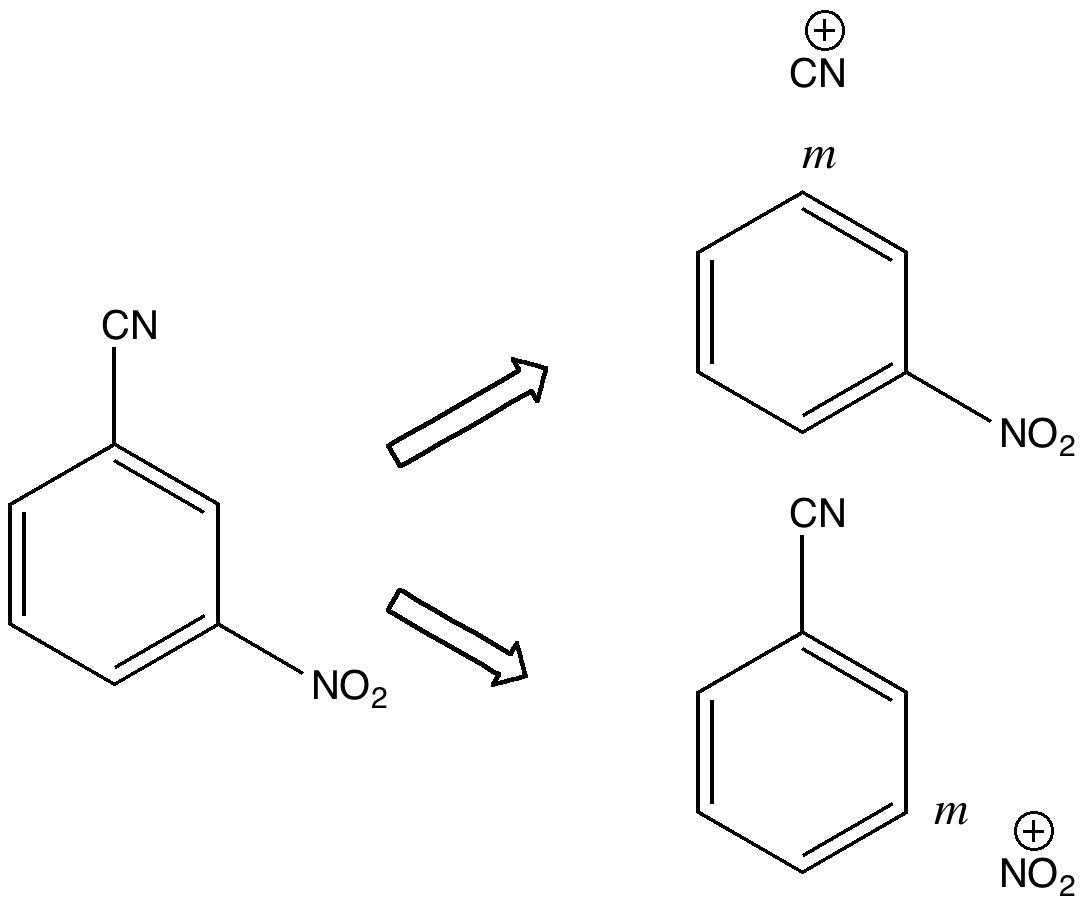In 2010 I recounted the story of an organic chemistry tutorial, in which I asked the students the question “how would you synthesize 3-nitrobenzonitrile“.

Archive for November, 2020
Is cyanogen chloride (fluoride) a source of C⩸N(+)?
Saturday, November 28th, 2020An interesting aromatic molecule found in Titan’s atmosphere: Cyclopropenylidene
Saturday, November 7th, 2020Cyclopropenylidene must be the smallest molecule to be aromatic due to π-electrons, with just three carbon atoms and two hydrogen atoms. It has now been detected in the atmosphere of Titan, one of Saturn’s moons[cite]10.3847/1538-3881/abb679[/cite] and joins benzene, another aromatic molecule together with the protonated version of cyclopropenylidene, C3H3+ also found there.
A new example of a quadruple bond from carbon – to Fe.
Saturday, November 7th, 2020Way back in 2010, I was writing about an experience I had just had during an organic chemistry tutorial, which morphed into speculation as to whether a carbon atom might sustain a quadruple bond to nitrogen. A decade on, and possibly approaching 100 articles by many authors on the topic, quadruple bonds to carbon continue to fascinate. Now an article as appeared[cite]10.1039/d0cp03436c[/cite] repeating this speculation for a carbon to iron quadruple bond,‡ in the very simple species C⩸Fe(CO)3 (see also a Rh-B equivalent[cite]10.1021/acs.jpclett.9b03484[/cite]). This is particularly exciting because of the very real prospect of synthesising this species and perchance getting a crystal structure (something not possible with most of the other quadruply bonded carbon systems studied to date).
Internet Archeology: an example of a revitalised molecular resource with a new activity now built in.
Thursday, November 5th, 2020In Internet terms, 23 years ago is verging on pre-history. Much of what was happening around 1997 on the Web was still highly experimental and so its worth taking a look at some of this to see how it has survived or whether it can be “curated” into a form that would still be useful. I had noted in my earlier comment a site which early on had become non-functional and then speculated whether any volunteers might have suggestions for how to best rescue it.
Trimerous pericyclic reactions: what is the effect of changing the electron count by two?
Monday, November 2nd, 2020In an earlier post, I pondered on how the “arrow pushing” for the thermal pericyclic reactions of some annulenes (cyclic conjugated hydrocarbons) could be represented in terms of either two separate electrocyclic reactions or of one cycloaddition reaction. Each reaction is governed by selection rules which can be stated in terms of the anticipated aromaticity of the pericyclic transition state as belonging to a 4n or a 4n+2 class. This in turn determines whether the topology of the transition state belongs to a class of aromatic species known as either Hückel or Möbius. Here I play with the observation that by adding or removing two electrons from the molecule, the two classes 4n and 4n+2 can be swapped. What happens to the aromaticities of the transition states if that is done?